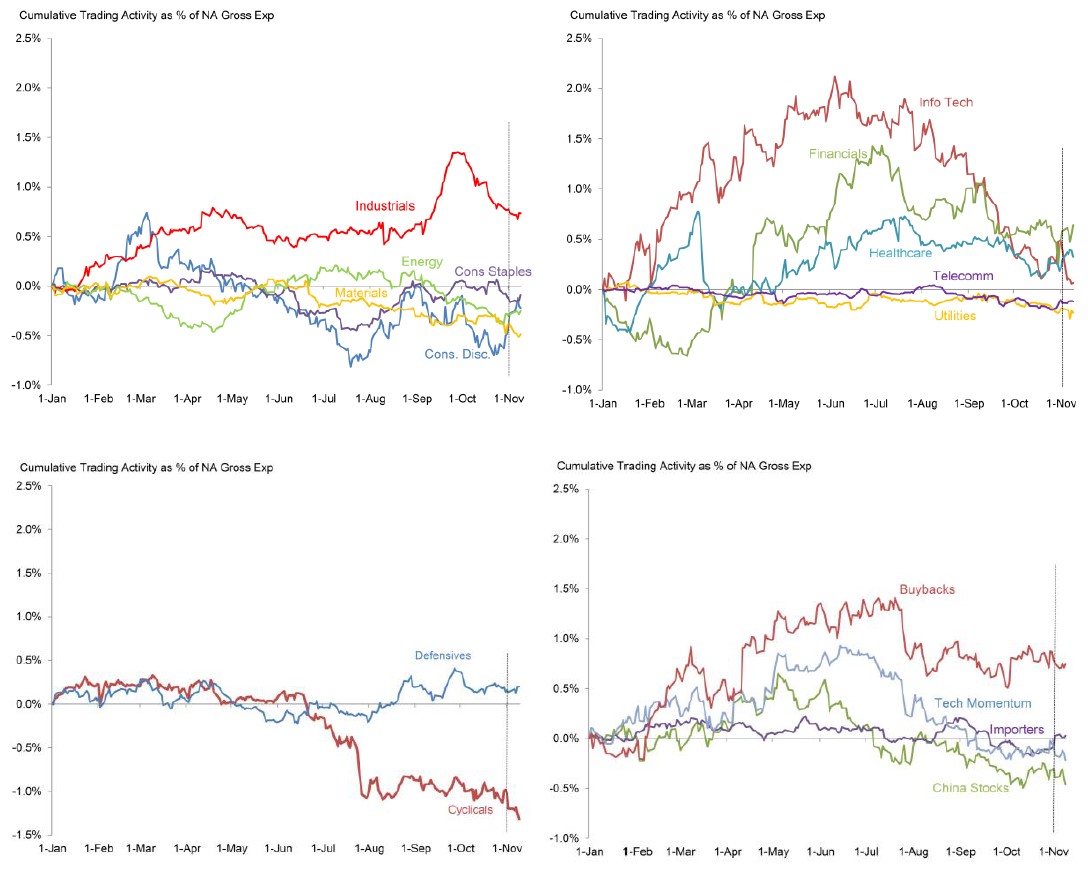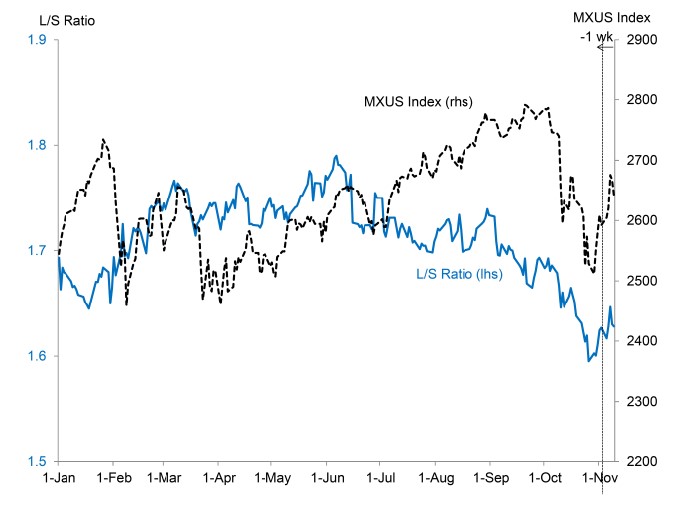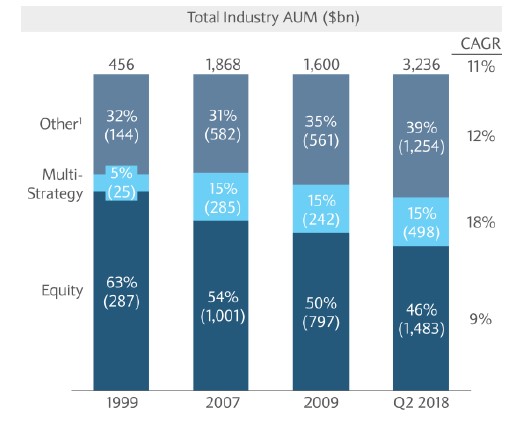Skenderbeg Alternative Investments‘ Put into perspective for the month of November 30, 2018.
Q3 hedge fund letters, conference, scoops etc
“Half the reason the consulting industry exists is because companies would rather pay hundreds of thousands of dollars for advice from someone in a nice suit than listen to a line worker who knows exactly what’s wrong with the company but has dirty fingernails.” – Morgan Housel
Hedge Funds
Hedge funds forced to cut fees to lure investors
Gross and net leverage
North America long/short ratio
North America trading activity by hedge funds
Female fund manager bonuses up to 70% below men’s
Women working at UK asset managers receive bonuses that are as much as 70 per cent below their male colleagues in revelations that will pile pressure on a sector that has been branded “pale, male and stale” to tackle its wide gender pay gap. According to initial data that compa- nies have filed to comply with new UK rules, salaries for women working in the fund industry are up to 40 per cent less than those paid to men, while the gap on bonuses is up to 72 per cent.
Fund managers linked the difference in pay to the lack of senior women in their organizations, as well as more women working part-time. Bev Shah, founder of CityHive, a network for women in finance, said it will be interesting to watch how these numbers change over the years. “It’s not a surprise to anyone that the gender pay gap numbers for asset management are how they are. You just need to open your eyes and walk around the investment floors to see how the numbers will look,” she said.
A poll of more than 500 FTfm readers last year found that 80 per cent believed transparency over the gender pay gap would improve equality for women in the fund industry. Fewer than 10 per cent of respondents said they felt women in the fund industry were paid the same as men for similar roles.
Hedge fund industry assets
Equity hedge fund alpha over time
Apple is a hedge fund that makes phones
When you buy a share of Apple stock, you do not simply buy into a $1 trillion technology company. You also buy a share of one of the world’s largest investment companies: Braeburn Capital, a wholly owned subsidiary of Apple. Braeburn manages a $244 billion financial portfolio— 70% of Apple’s total book assets. Apple acts like a hedge fund by supporting this portfolio with $115 billion of debt.
Like a hedge fund, Apple provides minimal disclosures on Braeburn Capital’s holdings. But unlike a hedge fund, Apple does not restrict itself to accepting funds from sophisticated investors. Apple invests the money of everyday investors, like a mutual fund—but without telling in- vestors what they own, the most basic protection mutual funds offer.
Equity and debt holders beware. Similar shadow hedge funds abound within S&P 500 industrial companies. Most disclose less information than Apple about their activities. Our research, published in the Journal of Finance, shows that in 2012 these corporations managed a com- bined portfolio of $1.6 trillion of nonoperating financial assets. Of this amount, almost 40% is held in risky financial assets, such as corporate bonds, mortgage-backed securities, auction-rate securities and equities. Current accounting standards require companies only to report ag- gregate valuations on a quarterly basis.
Like Apple, these companies lever up. The debt may appear safe at first when it is backed by financial assets. But these assets are not the safe and liquid ones that typically facilitate day-to-day operations. By shifting into riskier and more illiquid financial assets, corporations hurt their debt holders, ostensibly to help equity holders. Equity holders don’t seem to gain any benefit, though.
Our research shows that large holdings of risky financial assets are associated with the destruction of value. The market values a dollar of risky financial assets at substantially less than a dollar. Large risky asset holdings are also associated with poorer corporate governance, CEO overconfidence and risk-incentivizing executive compensation such as stock- and option-based pay.
Through these shadow hedge funds, industrial companies chase after alpha. But beating the market is hard, and the attempt destroys value through fees and the ensuing management distraction from the core business. Only the most select hedge-fund and mutual-fund managers outperform the market. It seems unlikely that the financial industry’s best money managers would choose to work for industrial companies at lower pay. Moreover, if corporate treasurers truly create value, companies should be happy to trumpet their success. Instead they hide their results from investors by taking advantage of weak disclosure requirements.
Harmonizing the disclosure standards of these shadow hedge funds with those required of mutual funds and other financial intermediaries— including quarterly reporting of every asset held and daily marking-to-market of the portfolio value—is critical for an informed investor base. This could be accomplished. Any company holding more than 1% of book assets in non-cash-equivalent financial securities should be re- quired to hold these assets in a subsidiary that reports its net asset value daily. Investors should be able to evaluate the performance of these shadow hedge funds for themselves and decide how they want to invest their money.
See the full article below.








